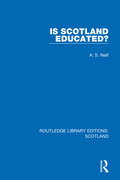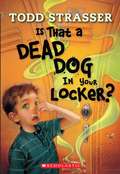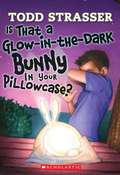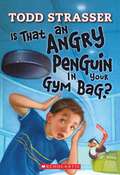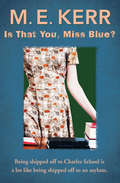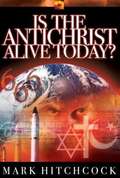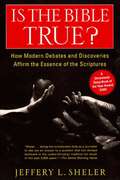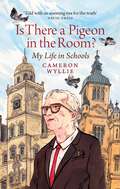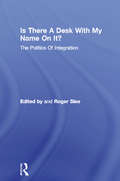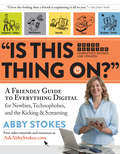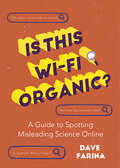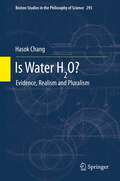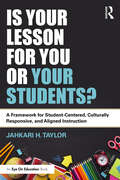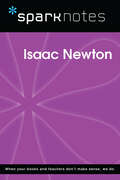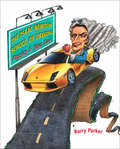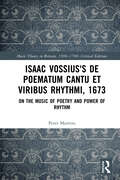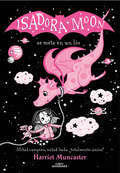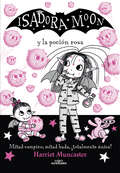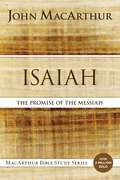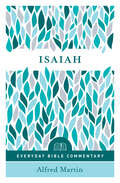- Table View
- List View
Is Science Multicultural? Postcolonialisms, Feminisms, and Epistemologies
by Sandra HardingThis book explores what the last three decades of European/American, feminist, and postcolonial science and technology studies can learn from each other. Sandra introduces and discusses an array of postcolonial science studies.
Is Scotland Educated? (Routledge Library Editions: Scotland #21)
by A. S. NeillOriginally published in 1936, and with more than a slightly tongue-in-cheek tone at times, the author of this book declares that Scotland is not educated but merely learned. This book does not deal with education in its narrowest sense: it ranges from the Kirk to Haggis, Tartans and Burns, Whisky and repressed sex in its discussion, proclaiming Calvinism as the root of most of Scotland’s evils. Honest and at times provocative, this volume does give direct access to the emotional roots of Neill’s feelings about Scottish education.
Is Scripture Still Holy?: Coming of Age with the New Testament
by A. E. HarveyIn this volume A. E. Harvey asks, Is the notion of "Holy Scripture" still credible? In particular, in the light of modern critical study and postmodern literary theory, does the New Testament still qualify as a "holy" book? Arguing that the New Testament must continually subject its credentials to examination for historical reliability, internal consistency, and general plausibility, Harvey tests the Bible's historical credibility and plausibility in seven concise chapters. In dialogue with historical criticism, he compares the New Testament to other ancient documents, examines its presentation of Jesus, and considers the New Testament's validity as a moral guide in the twenty-first century. Harvey's careful examination leads him to conclude that a good case can still be made for the New Testament's authority and "holiness," subject to continual reassessment in the light of further advances in understanding and criticism.
Is That a Dead Dog in Your Locker?
by Todd StrasserThe Tardy Boys, Wade and Leyton, are always getting into trouble, especially when they're dealing with the school bully, Barton Slugg. When their friend Daisy brings her neighbor's old dog Wheezy to school, the boys have to help her hide him. Not only does the school have a no-furry-animals-allowed policy, but the class crybaby is horribly allergic to animal fur. Barton is trying everything to uncover Wheezy's hiding place and get the boys in hot water. It will take the ingenious work of the Tardy Boys to outsmart him, with some hilarious results.
Is That a Fact?: Teaching Nonfiction Writing, K-3 (Tony Stead Content Area Collection Ser.)
by Tony SteadThe book you are about to read is destined to be the first, middle, and maybe even the last word on nonfiction writing for young, young children. It is certainly a text that you will return to over and over again as you do with a beloved cookbook.—from the Foreword by Tomie dePaola Over eighty- five percent of the reading and writing we do as adults is nonfiction, yet most of the reading and writing in K–3 classrooms is fiction or personal narrative. In Is That a Fact? Teaching Nonfiction Writing K-3, Tony Stead shows you how to open the door to the rich world of nonfiction writing that goes beyond what I did narratives and animal reports. And he convincingly demonstrates the importance of introducing nonfiction writing in the primary grades. Nonfiction inspires enthusiasm in young children because they can choose topics that are of interest to them personally. Is That a Fact? explores a variety of authentic purposes for writing nonfiction, such as describing, explaining, instructing, persuading, retelling, and exploring relationships with others. You will learn how to introduce each purpose using a variety of forms, including letters, reports, poetry, captions, directions, and interviews. Part One provides a complete overview of teaching nonfiction writing in the primary grades and includes:practical ways for organizing nonfiction resources within the classroom;how to assist children in collecting information for research;ideas for helping children keep their sense of voice when writing nonfiction;a chapter on spelling, with examples of how to guide students at each stage of spelling development;strategies for assessment and evaluation that guide teaching and learning engagements. Part Two provides five different explorations that were implemented in actual K–3 classrooms. Each focuses on a specific purpose for writing nonfiction and features:examples of whole-class, small-group, and independent instructional engagements;a comprehensive assessment rubric that will help teachers tailor instruction to the needs of all learners;an extensive resource section that includes lists of books in the exploration, grouped by readability levels;answers to the most commonly asked questions about teaching nonfiction writing. The appendixes include a self-assessment questionnaire, reproducible pages for exploring specific writing forms, and letters to parents. Children need to be introduced to the different purposes of nonfiction writing. They need to know how to plan, compose, revise, and publish nonfiction beyond narrative. Is That a Fact? guides you in achieving these goals with your students.
Is That a Glow-in-the-Dark Bunny in Your Pillowcase?
by Todd StrasserThis Halloween, Leyton and Wade Tardy are determined to come up with totally awesome costumes. Whoever has the best costume will win "The School With No Name's King of Candy Contest". Unfortunately, Fibby Mandible, the school's bossiest, snobbiest girl,and Barton Slugg, king of the archenemies, have their eyes on the same prize. And when the fiercest, meanest, most sinister aliens in the entire universe appear in the neighborhood, only Wade and Leyton can save the Earth from being destroyed. But can they win the candy contest and save the planet at the same time?
Is That an Angry Penguin in Your Gym Bag?
by Todd StrasserThanks to global warming, it's 85 degrees in the middle of the winter. Fortunately for Wade and Leyton Tardy, their school has an indoor hockey rink. But when they show up for practice, the ice has been taken over by penguins trying to escape the heat wave! Will Leyton and Wade be able to save the penguins from extinction?
Is That You, Miss Blue?
by M. E. KerrA teenager whose parents have separated tries to adapt to life at a boarding school and make a fresh start in a strange new placeAfter her mother runs off with her much-younger boyfriend, fourteen-year-old Flanders is shipped off to a boarding school in Virginia. On the train, she meets Carolyn Cardmaker, a preacher&’s daughter who will become her best friend. She also meets Ernestine Blue.Miss Blue is Flanders&’s faculty advisor at the Charles School, where each residence hall is named after a Charles Dickens novel. But Miss Blue&’s strict disciplinarian persona may be concealing a tragic past. As Flanders adjusts to life at school—which includes a deaf roommate and a terrifying blind date—she discovers surprising things about Miss Blue . . . and herself.A coming-of-age novel that transcends the ordinary in its perceptive, empathetic depiction of Flanders and the people in her life, Is That You, Miss Blue? takes us into a world where not everyone can be taken at face value—and where strangers can become unexpected friends.This ebook features an illustrated personal history of M. E. Kerr including rare images from the author&’s collection.
Is the Antichrist Alive Today?
by Mark HitchcockFind out what Mark Hitchcock means when he says there is an Antichrist alive today, right now, in this generation! Easy to read and biblically solid, Hitchcock's fascinating resource illuminates what the Bible says about the Antichrist and explains how the prophecies about him strikingly foreshadow today's events: 1) the rise of the European Union; 2) the peace process in Israel; 3) the rush toward globalization; 4) the technology and desire for a worldwide identification system; 5) the movement to rebuild the temple in Jerusalem
Is the Bible True?: How Modern Debates and Discoveries Affirm the Essence of the Scriptures
by Jeffery L. ShelerA Christianity Today Book of the Year: “An excellent book for anyone interested in the Bible both as a work of history and a testament of faith.” —Publishers WeeklyIn this authoritative, bold, and balanced book, renowned U.S. News & World Report religion writer Jeffrey L. Sheler sifts through the claims and counterclaims of contemporary biblical studies. After carefully investigating the full spectrum of cutting-edge research and conflicting reports, he challenges the popular perception that the credibility of the Bible has been seriously undermined by critical scholarship. Rather, he concludes that the weight of the historical evidence upholds the essential truth of Exodus, the Gospel accounts of Jesus, and other vital elements of the Bible. The author draws extensively from his own interviews with leading Bible experts and on-site reports from Israel and Egypt in his examination of scholarship’s hot-button issues, including: *Dramatic archaeological discoveries that both affirm and challenge the history in the Bible *The controversial quest for the historical Jesus and its sometimes-flawed arguments and skeptical assumptions regarding the reliability of the Gospels*The amazing revelations of the Dead Sea Scrolls and other ancient texts that profoundly influence our understanding of the Bible*The mysterious phenomenon of the Bible Code and why there may be far less to its doomsday prophecies than meets the eyeWritten in clear, compelling prose, Is the Bible True? presents a sophisticated analysis informed by important scholarly work in lucid, accessible terms.
Is there a Doctor in the House?: An Insider’s Story and Advice on becoming a Bible Scholar
by Ben Witherington IiiMany people assume that becoming a serious student of the Bible merely requires diligent study of English Bible translations, but biblical scholarship is much more complex. Is There a Doctor in the House? demonstrates what it takes to be a responsible Bible teacher, a well-published Bible scholar, or even a good student of the Bible: exacting knowledge of biblical languages and the languages in which most Bible scholarship is done; a love for history and archaeology; a sensitivity for literature and literary genres; and an understanding of theology, ethics, and ancient religions and philosophies. In one sense, every Bible scholar has to be a general practitioner—the foundation of biblical scholarship must be both broad and well built. Through the course of this book, Witherington invites would-be Bible experts to pursue excellence for the sake of the Bible’s world-altering message. From students considering a Ph.D. to lay Bible teachers, Is There a Doctor in the House? promises to be an informative, engaging, and often humorous resource.
Is There a Pigeon in the Room?: My Life in Schools
by Cameron WyllieIs There a Pigeon in the Room? is a deeply personal book about Cameron Wyllie’s remarkable four-decade career in teaching. It’s a tapestry of anecdotes and reflections on topics like drugs, parenting and sex education, laced with stories about memorable individuals. What did he say to the Third Year after drinking too much gin with the Head? Who was Adolf? What happened to the horrible bus driver? While the intention is to make the reader laugh plenty, Cameron also deals with discipline, refugees, tragic events, his own status as a gay man and tells us the story of Tes, an Eritrean boy who inspired hundreds of young people with his love of education. Cameron taught over 8,000 students in his career. Having been once described as ‘the place where Jean Brodie meets Kenneth Williams’ the book also charts the surprising trajectory of a career which culminated in his appointment as Principal of George Heriot’s, one of Edinburgh’s most prestigious schools.
Is There A Desk With My Name On It?: The Politics Of Integration
by Roger SleeThe satisfactory inclusion of children with disabilities in regular schools and classrooms provides a basis for debate from all corners of the world. This internationl collection looks at and analyzes the implications of policy for teachers, parents and students.; The views and experiences of exclusion and frustration are voiced by parents and students; this detail giving immediacy with theory developed in earlier chapters. Additionally, the experience of the integration of teachers is highlighted to provide examples of programmes, pedagogy and school organization, conducive to the inclusion of all students in the regular classroom.; This book is intended for use by post graduate and undergraduate students of education, teachers, researchers in special and regular education, counselling courses at student and teacher level.
"Is This Thing On?": A Friendly Guide to Everything Digital for Newbies, Technophobes, and the Kicking & Screaming
by Abby StokesLike a personal trainer for the digital age, Abby Stokes is the hand-holding, motivating expert that newbies—specifically older newbies—turn to when they want to become digitally literate. And her book, Is This Thing On?, is as smart, comprehensive, reassuring, and jargon-free as she is: the epitome of user-friendly. <P><P>And it is now completely revised and updated to keep pace with the fast-changing digital landscape, covering tablets, apps, video streaming, social media, and much more. <P>With the skill and assurance of a teacher who for over 20 years has personally taught computer skills to thousands of seniors and technophobes, Stokes covers it all: How to choose, buy, and start using the computer or tablet that’s just right for you, plus how to set everything up for maximum comfort and safety. How to connect to the Internet, sign up for email, understand and use search engines, and get started with essential skills like word processing and text messaging. How to choose, buy, and start using a smartphone. How to take and share digital photographs and videos. How to discover online communities and participate in social media like Facebook, Instagram, Pinterest, Twitter, YouTube, and blogs. How to explore the world of apps, online music, streaming movies, and ebooks. And, importantly, online security— including what to do when things go wrong. Appendices include both Apple and PC keyboard shortcuts and 200 recommended websites and 100 apps; there are FAQs at the end of each chapter and tips and tricks throughout. <P> An all-new companion website—AskAbbyStokes.com—will include video tutorials explaining the latest technologies.
Is This Wi-Fi Organic?: A Guide to Spotting Misleading Science Online
by Dave FarinaHow to separate facts from fake science in the Disinformation Age: “Cuts through the chaos . . . sure to keep you laughing while also keeping you thinking.” —Matt Candeias, PhD, author of In Defense of PlantsWe live in an era when scams, frauds, fake news, fake stories, fake science, and false narratives are everywhere. Fortunately, you don’t need a BS in Science to spot science BS. This guide from educator Dave Farina, aka YouTube’s Professor Dave, is a playful yet practical investigation of popular opinions and consumer trends that permeate our society. Shoppers insist on “organic” everything even if they’re unable to define the term. Healers and quantum mystics secure a foothold alongside science-based medicine in an unregulated and largely unchallenged landscape. Misleading marketing is used to sell you products and services that range from ineffectual to downright dangerous.With the knowledge gained from Dave Farina’s simple explanations of basic scientific principles, you can learn to spot misinformation and lies on the internet before they spot you. Learn the real science behind such semi-controversial subjects as drugs, vaccines, energy, and biotechnology—and most importantly, arm yourself with the critical-thinking skills everyone needs in a world filled with nonsense.“Scientific literacy is our best defense in an age of increasing disinformation.” —Kellie Gerardi, aerospace professional and author of Not Necessarily Rocket Science
Is Water H2O?
by Hasok ChangThis book exhibits deep philosophical quandaries and intricacies of the historical development of science lying behind a simple and fundamental item of common sense in modern science, namely the composition of water as H2O. Three main phases of development are critically re-examined, covering the historical period from the 1760s to the 1860s: the Chemical Revolution (through which water first became recognized as a compound, not an element), early electrochemistry (by which water's compound nature was confirmed), and early atomic chemistry (in which water started out as HO and became H2O). In each case, the author concludes that the empirical evidence available at the time was not decisive in settling the central debates, and therefore the consensus that was reached was unjustified, or at least premature. This leads to a significant re-examination of the realism question in the philosophy of science, and a unique new advocacy for pluralism in science. Each chapter contains three layers, allowing readers to follow various parts of the book at their chosen level of depth and detail. The second major study in "complementary science", this book offers a rare combination of philosophy, history and science in a bid to improve scientific knowledge through history and philosophy of science.
Is Your Lesson for You or Your Students?: A Framework for Student-Centered, Culturally Responsive, and Aligned Instruction
by Jahkari H. TaylorConnecting with students on a personal level is a very important aspect of teaching, but how can we ensure students are just as connected to what they’re learning? Is Your Lesson for You or Your Students? answers this question by providing a student-centered, culturally responsive, and curriculum-aligned framework that teachers can easily implement into their classrooms.Author Jahkari "JT" Taylor, a seasoned educational leader and instructional coach, walks readers through his I.C.E.D. T.E.A. acronym to enrich the instructional capacity of K–12 educators. Each chapter contains professional insight, researched-based approaches, reflection questions, and practical strategies for leveraging knowledge of students to inspire learning in the academic setting. Downloadable resources, such as the I.C.E.D. T.E.A. Framework, the Checklist for Aligning Curriculum, and the PACE Framework, are also provided to cultivate reflective practitioners and help teachers prioritize their students and methodology.Whether you’re a veteran educator or just starting your teaching career, you’ll come away with a plethora of strategies for creating student-centered lessons, maximizing student achievement, and creating enjoyable learning experiences for all students.
Isaac Newton (SparkNotes Biography Guide)
by SparkNotesIsaac Newton (SparkNotes Biography Guide) Making the reading experience fun! SparkNotes Biography Guides examine the lives of historical luminaries, from Alexander the Great to Virginia Woolf. Each biography guide includes:An examination of the historical context in which the person lived A summary of the person&’s life and achievements A glossary of important terms, people, and events An in-depth look at the key epochs in the person&’s career Study questions and essay topics A review test Suggestions for further reading Whether you&’re a student of history or just a student cramming for a history exam, SparkNotes Biography guides are a reliable, thorough, and readable resource.
Isaac Newton School Driving: Physics & Your Car
by Barry Parker&“Wonderful . . . a great resource for automobile fans who want to understand science, and vice versa.&” —Alan C. Tribble, author of A Tribble&’s Guide to Space For some, driving is an art; for others, it&’s a science. At the Isaac Newton School of Driving, though, every car is a laboratory on wheels and every drive an exciting journey into the world of physics. In this book, physics professor Barry Parker—whose father was a car mechanic and garage owner—shows how almost every aspect of driving involves physics. A car's performance and handling relies on concepts such as force, momentum, and energy. Its ignition system depends on the principles of electricity and magnetism. Braking relies on friction—and if the brakes fail, the resulting damage, too, can be predicted using physics. Parker&’s first lesson describes the basics: speed and acceleration; why you get thrown forward while braking or outward while turning; and why car advertisements boast about horsepower and torque. He also discusses: the thermodynamics of engines, and how they can be more fuel efficientwhat friction and traction are and how they keep a car&’s tires on the road, whether it's dry, wet, or icyhow simple laws of physics enable scientists to design aerodynamic cars and high-tech steering systemsthe high-performance physics of auto racinghow traffic accidents are reconstructed by policehow chaos theory helps explain why traffic jams happenwhat cars of the future might look like, and more &“You don't need to be an engineer to read and enjoy Parker&’s often entertaining book…covers everything from the basics of engines and electronics to crashes and congestion.&” —Autoweek
Isaac Vossius's De poematum cantu et viribus rhythmi, 1673: On the Music of Poetry and Power of Rhythm (Music Theory in Britain, 1500–1700: Critical Editions)
by Peter MartensDr Peter Martens provides the first complete edited English translation of, and commentary on, Issac Vossius’s De poematum cantu et viribus rythmi, a late seventeenth-century work of Continental musical humanism, all the more interesting for being published in England and dedicated to royalist Henry Bennett, Duke of Arlington. This treatise plays an important but poorly understood role in the continued development of rhythmopoeia; Vossius continues the arguments of figures such as Vincenzo Galilei and Marin Mersenne - desiring to link linguistic rhythm, music, and the passions - by proposing a practical, if undemonstrated, method for doing so based on ancient poetic feet. This resuscitation of poetic feet in the service of affect is made explicit by Vossius, but is undoubtedly more familiar to musicologists from Wolfgang Caspar Printz's 1696 Phrynis Mitilenaeus or Johann Mattheson's 1739 Der vollkommene Capellmeister. Vossius, or more correctly, De poematum cantu, was often cited during the century after its publication, and no modern treatment of rhythmopoeia seems complete without a citation or short excerpt from this work. There is little secondary literature that focuses on this treatise, but what does exist links this work directly to John Dryden's composition of his 1687 and 1697 St. Cecilia odes, and their musical settings by Giovanni Battista Draghi and Jeremiah Clarke, respectively. In Dean Mace and H. Neville Davies' debate over the extent of Vossius's influence on these works can be found a rich picture of the contentious issues surrounding text-setting and musical affect that so occupied a great many writers in late-seventeenth-century England. A full translation and accompanying discussion of Vossius's own sources and musical influences allows English-language students and scholars to access and study this work in the depth and to the degree it deserves.
ISACA Certified in Risk and Information Systems Control (CRISC®) Exam Guide: A primer on GRC and an exam guide for the most recent and rigorous IT risk certification
by Shobhit MehtaPrepare to pass the ISACA CRISC exam with confidence, gain high-value skills, and propel yourself toward IT risk management masteryKey FeaturesGain end-to-end coverage of all the topics assessed in the ISACA CRISC examApply and embed your learning with the help of practice quizzes and self-assessment questionsHave an in-depth guide handy as you progress in your enterprise IT risk management careerPurchase of the print or Kindle book includes a free PDF eBookBook DescriptionFor beginners and experienced IT risk professionals alike, acing the ISACA CRISC exam is no mean feat, and the application of this advanced skillset in your daily work poses a challenge. The ISACA Certified in Risk and Information Systems Control (CRISC®) Certification Guide is a comprehensive guide to CRISC certification and beyond that’ll help you to approach these daunting challenges with its step-by-step coverage of all aspects of the exam content and develop a highly sought-after skillset in the process. This book is divided into six sections, with each section equipped with everything you need to get to grips with the domains covered in the exam. There’ll be no surprises on exam day – from GRC to ethical risk management, third-party security concerns to the ins and outs of control design, and IDS/IPS to the SDLC, no stone is left unturned in this book’s systematic design covering all the topics so that you can sit for the exam with confidence. What’s more, there are chapter-end self-assessment questions for you to test all that you’ve learned, as well as two book-end practice quizzes to really give you a leg up. By the end of this CRISC exam study guide, you’ll not just have what it takes to breeze through the certification process, but will also be equipped with an invaluable resource to accompany you on your career path.What you will learnAdopt the ISACA mindset and learn to apply it when attempting the CRISC examGrasp the three lines of defense model and understand risk capacityExplore the threat landscape and figure out vulnerability managementFamiliarize yourself with the concepts of BIA, RPO, RTO, and moreGet to grips with the four stages of risk responseManage third-party security risks and secure your systems with easeUse a full arsenal of InfoSec tools to protect your organizationTest your knowledge with self-assessment questions and practice quizzesWho this book is forIf you are a GRC or a risk management professional with experience in the management of IT audits or in the design, implementation, monitoring, and maintenance of IS controls, or are gearing up to take the CRISC exam, then this CRISC book is for you. Security analysts, penetration testers, SOC analysts, PMs, and other security or management professionals and executives will also benefit from this book. The book assumes prior experience of security concepts.
Isadora Moon 5 - Isadora Moon se mete en un lío: ¡Un libro mágico con purpurina en cubierta! (Isadora Moon #Volumen 5)
by Harriet MuncasterLlega una nueva y preciosa edición de Isadora Moon, el gran éxito de ventas con más de DOS MILLONES de ejemplares vendidos. Su mamá es un hada, su papá es un vampiro y ella tiene un poquito de los dos. Cuando llega el día de «Trae tu mascota al colegio», Isadora quiere llevar a Pinky, pero su prima mayor Mirabella tiene un plan mejor... ¿Por qué no llevar un dragón? ¿Qué podría salir mal? Una edición especial para regalar... ¡con un nuevo capítulo y más actividades! Con irresistibles ilustraciones en negro y rosa y una heroína única, «Isadora Moon» es una encantadora y divertida serie de lecturas ideal para jóvenes lectores a los que les gustan las flores y la purpurina, pero a los que también les atrae el mundo misterioso de los vampiros.
Isadora Moon y la poción rosa (Isadora Moon #Volumen 11)
by Harriet MuncasterMitad hada, mitad vampiro, ¡y totalmente única! ¡Llega una nueva aventura de esta encantadora serie! Isadora Moon es especial porque es diferente. Su mamá es un hada, su papá es un vampiro y ella tiene un poquito de los dos. Isadora se enfrenta a su primer examen de matemáticas y... ¡no está preparada! Con la ayuda de su prima Mirabella, da con una poción para ponerse «malita», pero... ¿seguro que es buena idea? ¿Podrá Isadora arreglar todo este lío con su magia? Con irresistibles ilustraciones en negro y rosa y una heroína única, «Isadora Moon» es una encantadora y divertida serie de lecturas ideal para jóvenes lectores que quieren flores y purpurina, pero a los que también les atrae el mundo misterioso de los vampiros.
Isaiah: The Promise of the Messiah (MacArthur Bible Studies)
by John F. MacArthurIsaiah's ministry as a prophet—during the period of the divided kingdom—spanned the reigns of four Judean kings. He condemned the empty ritualism of his day and the idolatry into which the people had fallen. He foresaw the coming Babylonian captivity, and some of his prophecies were even fulfilled in his lifetime, but the literal fulfillment of his prophecies concerning Christ's first coming have given Isaiah's words their strongest vindication—and the further assurance in the prophecies of Christ's second coming.In this study, pastor John MacArthur will guide you through an in-depth look at the historical backdrop to the book of Isaiah, continuing through the different prophecies and the teachings about the grace of God. Studies include close-up examinations of Uzziah, Jotham, Ahaz, and Hezekiah, as well as careful considerations of doctrinal themes such as the "Redemption of Israel" and "The Future Glory of God's People."—ABOUT THE SERIES—The MacArthur Bible Study series is designed to help you study the Word of God with guidance from widely respected pastor and author John MacArthur. Each guide provides intriguing examinations of the whole of Scripture by examining its parts and incorporates:Extensive, but straight-forward commentary on the text.Detailed observations on overriding themes, timelines, history, and context.Word and phrase studies to help you unlock the broader meaning and apply it to your life.Probing, interactive questions with plenty of space to write down your response and thoughts.
Isaiah (Everyday Bible Commentary)
by Alfred MartinProphecy can be confusing. In a book like Isaiah, historical events are presented out of order and right next to future prophecies without obvious distinctions between the two. Plus, it&’s full of strange symbols like the sprout that grows out of the root of Jesse. What we need is a guide—someone who will tell us what&’s historic and what&’s prophetic, and explain all the strange symbolism clearly and simply. This is what the best preachers do, but you don&’t have to wait until Sunday&’s sermon. Encounter the beautiful depth of Isaiah through an enlightening commentary from Alfred Martin that&’s both straightforward and insightful. You&’ll gain:Important historical background Insights from the original languageExplanations of the prophetic symbols And more!You don&’t have to go to seminary to encounter God in exciting, new ways through His Word. Discover how much more enjoyable your personal study will be with understandable, quality Bible commentary for everyday life.

